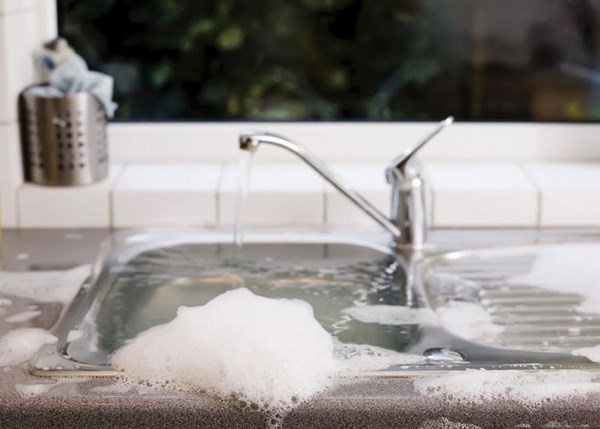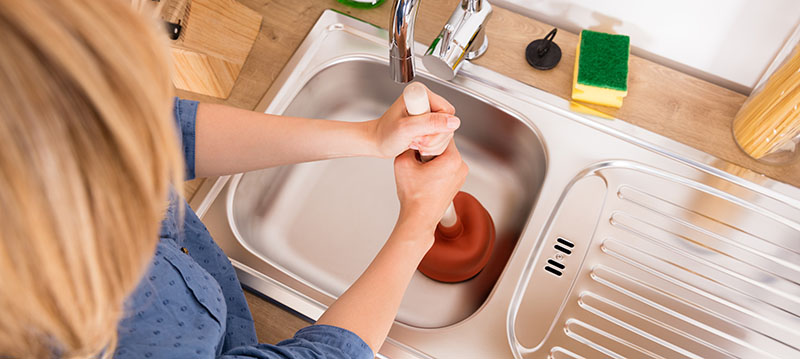6 Insights Into Your Kitchen Sink's Blockage Issues
6 Insights Into Your Kitchen Sink's Blockage Issues
Blog Article
The author is making a number of great pointers related to Why Is My Sink Not Draining? as a whole in the content down the page.

It's not regular for your cooking area sink to clog up multiple times in one month. If your sink blocks two times a week, there's some problem taking place.
A blocked cooking area drain doesn't just decrease your jobs, it weakens your entire plumbing system, bit by bit. Here are some usual practices that motivate sink obstructions, as well as exactly how to prevent them.
You require proper waste disposal
Reusing waste is wonderful, but do you take note of your organic waste as well? Your kitchen area needs to have 2 different waste boxes; one for recyclable plastics and another for organic waste, which can become compost.
Having an assigned trash can will certainly aid you and also your family members stay clear of tossing pasta and also various other food residues down the drain. Typically, these remnants absorb moisture and become clogs.
The fault isn't from your kitchen sink whatsoever
Maybe the problem isn't from your kitchen sink, but the entire drainage system. In such a case, you might see that sinks and also drains pipes obtain blocked every other week. You require an expert plumbing service to fix this.
You're throwing coffee down the drain
Used coffee premises and also coffee beans still soak up a considerable amount of wetness. They may seem little adequate to throw down the drainpipe, however as time goes on they begin to swell and occupy even more area.
Your coffee grounds ought to go into natural garbage disposal. Whatever portion leaves (possibly while you're washing up) will certainly be cared for throughout your regular monthly cleanup.
You have actually been consuming a lot of greasy foods
Your kitchen sink might still get obstructed despite having natural garbage disposal. This may be because you have a diet abundant in oily foods like cheeseburgers.
This oil coats the insides of pipes, making them narrower as well as more clog-prone.
Use a plunger
Your pipe had not been repaired effectively to begin with
If you've been doing none of the above, yet still get normal blockages in your cooking area sink, you should call a plumber. There might be an issue with how your pipelines were installed.
While your plumber gets here, check for any kind of leaks or abnormalities around your kitchen pipelines. Don't try to fix the pipelines yourself. This might cause a crash or a kitchen flooding.
Someone attempted to clean their hair in the kitchen area sink
There's a correct time and area for everything. The kitchen area sink is just not the best area to wash your hair. Cleaning your hair in the kitchen sink will make it obstruct sooner or later unless you use a drainpipe catcher.
While a drain catcher may catch the majority of the fallouts, some hairs may still make it through. If you have thick hair, this might be enough to reduce your drainage and also eventually create an obstruction.
There's more dirt than your pipelines can handle
If you get fruits straight from a ranch, you may observe even more kitchen dirt than other individuals that go shopping from a mall. You can quickly repair this by cleaning the fruits as well as veggies appropriately prior to bringing them into your home.You require correct waste disposal
My Kitchen Sink Won’t Drain - What Should I Do?
If Your Sink Has a Garbage Disposal...
Turn on the disposal. If the disposal hums and doesn’t turn, then there’s clog in the disposal unit.
Go to your circuit breaker panel, and switch off the circuit breaker to your garbage disposal.
Back in your kitchen, double-check that your garbage disposal is off by trying to turn it on. The disposal should not move, and it should not make any noise.
Lie down underneath your sink so that you can see and access the bottom of the disposal unit. Look for a hole that looks like the head of a hex-head bolt in the center of the unit.
Place an Allen wrench inside this hole and turn it from side to side until you feel a decrease in resistance and are able to rotate the wrench completely in a single direction. This action rotates your disposal’s blade manually.
Put the wrench aside, and press the disposal unit’s reset button or switch.
Flip your garbage disposal’s circuit breaker switch back on, and turn on the unit to see if the obstruction has cleared. If it hasn’t, repeat the steps above until the obstruction is removed.
How to Unclog a Kitchen Sink Drain
If you have a double bowl sink, seal one side of the sink with an airtight lid or a second plunger before plunging the other side. Otherwise, you won’t be able to create adequate suction.
Place the cup of the plunger completely over the drain opening.
Turn on the faucet, and let the water run until it completely covers the cup of the plunger.
Start plunging by pushing the plunger down and pulling up again in order to build up suction. Make sure that the edges of the plunger stay in contact with your sink, or else you’ll lose the suction.
If you have trouble forming a seal between your sink and plunger, add petroleum jelly to the mouth of your plunger, and try again.
Plunge about five or six times before removing the plunger to see if water starts to drain properly. In some cases, you’ll even be able to feel the clog become dislodged while you plunge because suddenly there will be much less resistance. Repeat the plunging process until the clog clears.
Once water is draining properly again, run hot water down the drain for 5 minutes to help clear away grease, grime, and debris from the clog. https://www.plumbingjoint.com/blog/2019/august/my-kitchen-sink-won-t-drain-what-should-i-do-/

My Kitchen Sink Won’t Drain - What Should I Do?
If Your Sink Has a Garbage Disposal...
How to Unclog a Kitchen Sink Drain
https://www.plumbingjoint.com/blog/2019/august/my-kitchen-sink-won-t-drain-what-should-i-do-/
I'm just very eager about Easy Ways to Unclog Any Drain in Your Home and I hope you enjoyed reading the blog post. Loved our write-up? Please share it. Let another person find it. Thanks so much for your time invested reading it.
Free Estimates
Report this page